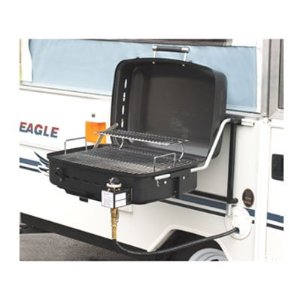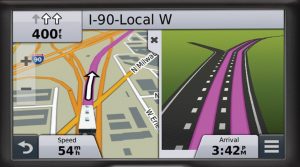RV Checklists for Different RV Situations
Living in an RV – Checklist for equipping your RV
These are things that you’ll want to have in your recreational vehicle (RV) but won’t carry back and forth. Think of this as equipping your second home. Some of these are household items, and some will be technical manly items.
This list needs work!
- IMPORTANT : Always identify your nearest Tornado Shelter
- Corkscrew / Can Opener / Bottle Opener
- Electrical Heater – like a space heater – we LOVE having this with us.
- Frying pan / Saucepan
- Bathroom Items
- Towels
- Washclothes
- Shampoo
- Soap
- Broom / Dustpan / Small sweeper / Cleaning fluids
- Flashlight
- Tools
- Screwdriver – multi-purpose
- Pliers – also might recommend a channel lock.
- Things to level the RV (we carry boards)
- Jack pads ( we carry small boards )
- A small wrench kit
- Padlock and key for the hitch (we have this for Puma our travel trailer)
- A level for leveling. Maybe people with fancy systems do not need this.
- Water purifier (the pitcher type thing for your fridge).
- Windex window cleaner.
- Mosquito repellent.
- Anti-itch cream.
- Ibuprofen.
- Antacid
- Boards for the stabilizer jacks on each corner of the recreational vehicle.
- Boards for the MAIN jack located on the tow bar for the RV.
- Boards for the LOW side wheels in case you need it for leveling the RV left to right.
Living in an RV – Checklist for when you need to leave your RV behind at an RV Park
Sometimes you will leave your RV ( recreational vehicle ) setup like we are doing so you have it as a vacation home. When you leave it, you have to do a certain amount of preparation. I think this list would need to be augmented for leaving for period of more than 2 weeks. Certainly, this list is quite different when towing the RV out.
I put together this checklist, which we discovered by making mistakes!
- Disconnect and Drain your clean water (especially if cold) from the system.
- Disconnect your cable TV (low priority).
- Unplug all appliances plugged into normal outlets if possible.
- Drain your black water tank if you are using it (we do).
- Follow with draining your grey water tank.
- Remove your sewer drain hose and stow.
- Turn OFF your hot water heater.
- Turn OFF your heating/air conditioning.
- Close all your windows.
- Close any roof-side vents (like in the restroom).
- Crank down your TV antenna (if you are using it).
- We LEAVE our slide out. I think this is personal conviction.
- Slide in your awning in case it is windy or will rain. Actually, bring it in no matter what.
- Put away loose furniture that is outside.
- Turn OFF and also check your Propane tanks.
- (New in 2019 from RV52 learning by experience – yuk) Check the Refrigerator
- Make sure fins have ice melted off them
- Drain the water capture thingy in the back
- Probably a good idea to pull all of your blinds.
- LEAVE your electric plugged in for your fridge.
- Quick inventory – make list of what you need for the RV when you return.
- Dirty Laundry – Clothes / Sheets / Towels
- Leave a sign or card in the window by the door or nearby with your cell phone number
- Lock your doors, storage areas.
Checklist for breaking camp and pulling your RV out to move on
Here is a checklist for preparing the RV to be moved from its current spot. I’m sure that it is incomplete, so expect that this list will be updated from time to time.
- Drain the black tank(s). Make sure you have a full gray tank – You would pull the black tank first, then pull the gray tank to wash it away.
- If you have it, run the black tank rinse system.
- Turn off the water. Run water to release all the pressure.
- Close up the gray AND blank tanks.
- Bring in the awning if it is out.
- Drain the Fresh water if you have water in the tanks. Fresh water is VERY heavy – 8pounds per gallon – not great for staying legally under your weight limit.
- Check the clearances for all of the slide-outs (internally) so they don’t run up against something. We had a cabinet that we wrecked several times… poor thing.
- Strap in all the TV’s for travel.
- Refrigerator Management (New in 2019 from RV52 learning by experience – yuk) Check the Refrigerator
- Make sure fins have ice melted off them
- Drain the water capture thingy in the back
- Fill the fridge with cold stuff (better thermal mass) if possible IF THE TRIP IS SHORT
- Otherwise, consider another plan for items needed to stay cold
- I personally do not think propane should be on at all during travel
- Identify anything on top of cabinets or display cases that can fall. Move to a place where it cannot fall anymore.
- Toaster ovens
- Picture frames
- etc.
- Shut down any computers properly.
- Secure all blinds
- Retract TV antenna’s
- Remove/stow cable TV wiring if it exists.
- Pull in slides – have someone watch while they get pulled in.
- Turn off the LP gas so that any accident is less exciting.
- Assume your refrigerator will no longer cool.
- Even if your refrigerator says “DC”, generally, this means that the heater for the gas absorption mechanism comes from DC power – ergo – you need propane – and propane should be OFF for travel.
- Disconnect the water hose. Drain hose and stow.
- Disconnect the black & gray water hose (stinky slinky). Stow
- Disconnect the electric power (I would shut off the breaker first). Stow
- Follow your RV manufacturer’s instruction on connecting your RV to the tow vehicle (or your toad to your RV)
- Release leveling/stabilization mechanisms and retract for traveling
- Removing any wheel chocks after fully connected.
- Engaging any safety mechanisms.
- Any items on the ground – pick up and put inside storage areas.
Checklist for Leaving Home and returning to your Parked and Ready to Go RV at an RV park
You’ve had a hard week. It’s Friday afternoon, you’re tired, you’re ready to leave work, and you have your recreational vehicle parked somewhere “ready to go” and you can have a relaxing weekend at your “RV vacation home”
But if you forget even the simplest things, your weekend can start with a real smudge.
Here is a list that we have put together and are also refining (it will grow/change/even shrink) as we go from our lives in the city to our travelling vacation home which we have parked at a nearby RV park.
By the way, rent at an RV park isn’t horribly more expensive than storage! Something to think about, right?
I put together this checklist, which we discovered by making mistakes!
- Have an RV bag. This is a bag that throughout the week you place things into the bag that you will need and enjoy having at your RV.
- Computer
- Clothes
- Groceries
- Shoes – We packed our clothes but forgot shoes… once!
- Low Fat / Low Sugar Food for the trip – Don’t stop and buy junk!
- Drinks for the trip!
- Sheets
- Towels – Clean :-)
- Toothpaste
- Deodorant
- Soap
- Shampoo
- Razors / Shavecream
Now, grab your stuff and head for the recreational vehicle!
Other hints and tricks about living in an RV
Economic Considerations about Living in an RV – especially fulltime
If you see the analysis in THIS BOOK, you’ll see than living in an RV can be just as good of a ‘total asset value’ at the end of the analysis period as purchasing a house. Of course Rent isn’t even close.
But the mechanisms for value-capture are VERY different between RV living and house living.
For the RV scenario, the MAJOR value-capture mechanism is saving the difference between the old rent and the cost of the RV site. This is a key behavioral concept. Can you do it?
But I’m not sure how to do the analysis if you can neither afford rent @ $1400 (just a number that is reasonable for many urban areas) or a house.
In some ways an RV would be a spectacular way to live cheaply, live greenly (a new word), and also be prepared in case you need to move. Something so simple as moving from one end of town to the other could mean that you just move your RV to the other side of town.
A single smart relocation of your RV could save $100-200/month in gas. While the MOVE of the RV was not a ‘low carbon’ event, the savings from driving less every day month after month IS green and cannot be discounted.
While the RV itself would be expensive – we want a nice one – the rest of the package would not be expensive. For the folks that don’t have a great deal of money, I’m convinced that with $15K you could get a pretty decent used RV.
Here are some thoughts and considerations in bullet form that Sheri and I have considered that are important in the RV purchase and living consideration. This is in no particular order.
- When you think RV, you have to think about how you will tow it. You can OWN a truck OR you can rent a truck. I priced truck rentals and they are $100-200/day for short term. That is a very economical way to move your RV and keeps you out of having to own a truck.
- We believe that a fifth wheel is the best RV to live in full time. Also we’re pretty convinced that we’ll be OK driving it. No matter how much we look at the BIG daddy Class A’s, the front part seems to use up the square footage. Plus we are simple people!
- Forgetting about trucks or RV costs, we can live at a great urban RV park for $550-700 per month, utilities included. So a person would save almost $900/month by doing this. Do you know what kind of big rig a person could buy with that kind of free cash?
- Insurance is a wash. Renters insurance versus homeowners insurance versus RV insurance.
- You have to have a slide-out in the master bedroom. Why? Because if you have a slide, you generally get enough space to walk around the bed and have a reasonable closet space.
- You probably would want one more slide to make the living area much bigger.
Think about how to choose your RV Home Base
You’ve maybe been living in your RV part time for a couple of years now, and you love the freedom RV life entails. From visiting the Grand Canyon with your family last March to that fun weekend you spent in Las Vegas with the girls, RV life symbolizes fun, adventure and being able go anywhere the open road can take you.
In fact, you love traveling in your RV so much, you want to start living in it full time. But before you take the plunge, there are some logistical issues and loose ends to tie up.
After all, you’ll still be paying taxes and getting mail. In order to do this successfully, you’ll need to establish a home base. As you go through the process of choosing your home base, keep the following bits of advice in mind:
Make the Home Base Convenient
Just about every new full-time RV’er will head out from the state where they have been living, and where they have established their residence.
Chances are good you are already familiar with the tax laws for your state, as well as your insurance regulations and more. In order to keep things as easy and simple as possible, you might want to consider keeping your old stomping grounds as your home base.
In other words, if you’ve lived the past two decades in Oregon, you may want keep the Beaver State as your home base.
Consider State Income tax
If you’re not particularly interested in keeping your home state as your home base, you can also choose a different state based on a variety of criteria.
For example, some full-time RV’ers like to choose a state that currently has no state income tax, as this can result in some nice savings come tax time. Right now, several states do not have a state income tax, including the beautiful states of Texas, Florida, Nevada and Wyoming.
Remember Your Friends and Relatives
Sometimes choosing a home base isn’t about convenience or taxes. Full-time RV’ers might want to think about where they will probably be spending most of their time.
For example, if the majority of your kids and grandkids reside in Idaho, and you see yourself settling in at an RV park for a good part of the year, then Idaho might be the best home base for you.
Look Up Vehicle Registration Costs
Although these fees tend not to be as high as personal income taxes, vehicle registration does definitely vary from state to state. Also, rules and regulations are different all over, so you should definitely do your homework and make sure your desired home base does not have vehicle registration policies that will be hard to adhere to.
For example, some states require an annual safety inspection and/or an emissions test. If your home base is in California but you find yourself spending most of your time on the East Coast, driving cross country every year for these inspections may be a huge hassle.
Think About Mail Delivery
Even if you’re on the open road a lot of the time, you will still get mail—and those bills, magazines and annual Christmas letters from Aunt Marian will need a place to be delivered.
Many RV clubs offer mail forwarding services, including PakMail or Mailboxes. If you are anticipating being in Florida for a good part of the winter, you can request that your mail be sent to the local post office.
Just to be on the safe side—since you may be relying on other people to forward your credit card bills and other personal information, you should invest in an identity theft protection service from a company like LifeLock. The last thing a full-time RV’er wants to deal with is identity theft or credit card issues from 2,000 miles away.
A book about downsizing to live in an RV
The RV is the ultimate in living small. The LARGEST RV’s are limited by US transportation laws AND the RV Industry Association to 400 square feet. So the square footage is down from that number!
(Note: Learn more about living life fully, but with less stuff from the book The Spartan RV. This book would be immensely helpful if you are thinking about downsizing your life)
Articles about Living in an RV
 BBQ How to Video Gallery You can’t own an RV and not think a LITTLE bit about BBQing can you? RV52 thought that a gallery of BBQ vids might be pretty darned neat. RV BBQ Products and Replacement Parts
BBQ How to Video Gallery You can’t own an RV and not think a LITTLE bit about BBQing can you? RV52 thought that a gallery of BBQ vids might be pretty darned neat. RV BBQ Products and Replacement Parts Youtube RV Desert Camping Living in an RV is one thing, but living in an RV in the desert is wholly another.
Youtube RV Desert Camping Living in an RV is one thing, but living in an RV in the desert is wholly another.
Check out this information page with video stories about living in an RV in the desert!
RV Living Videos
[tubepress mode=”tag” tagValue=”living in an rv”]

Leave a Reply